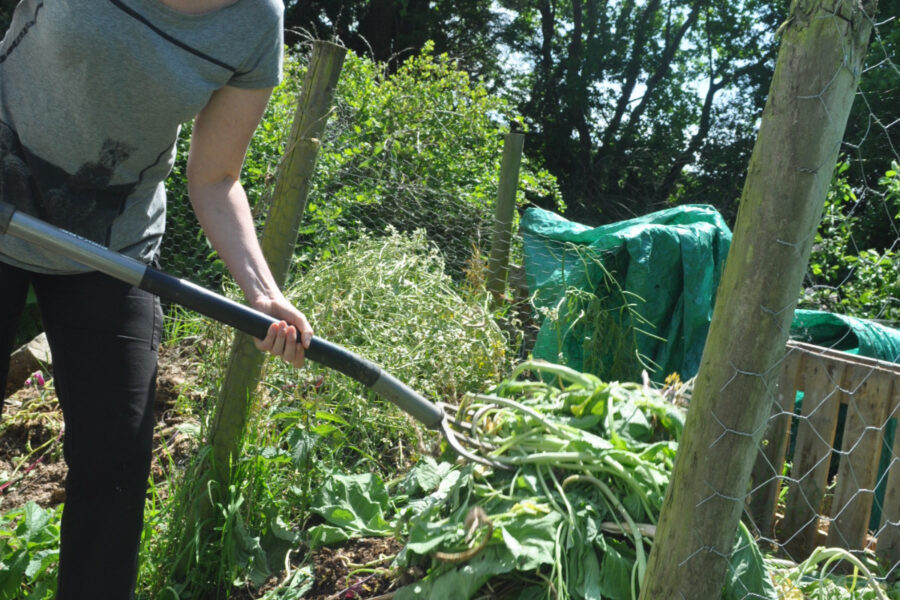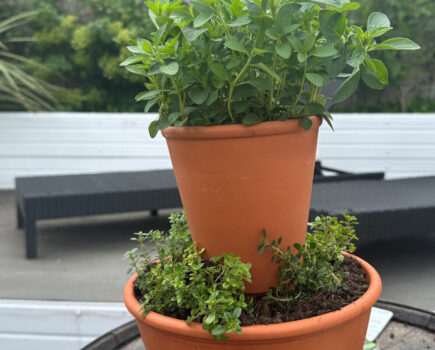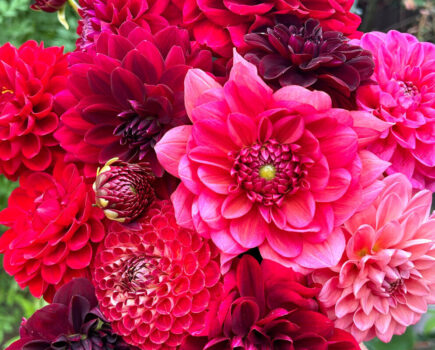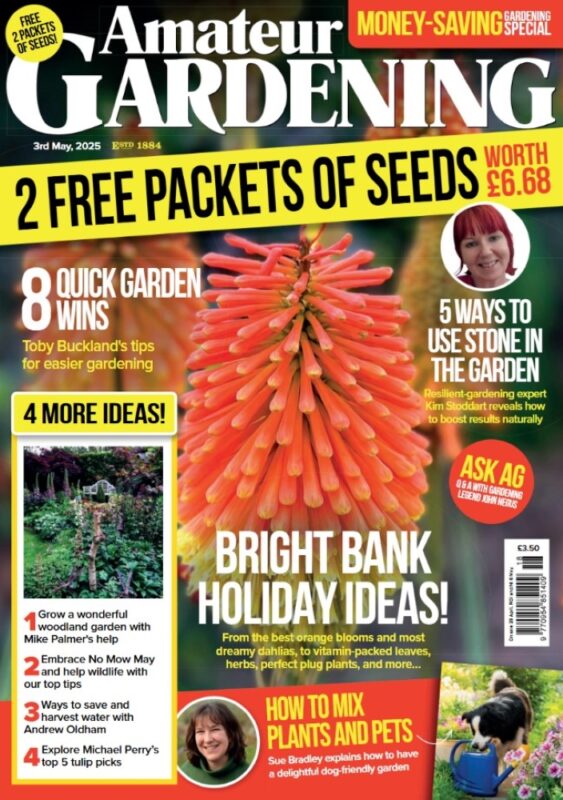Editor Kim Stoddart reveals lots of easy and enjoyable ways to save money in the garden this year
Having first properly experimented with ways of cost-free gardening more than a decade ago, the sheer feel-good factor of transforming the unloved into the useful and waste into something wondrous has stayed with me firmly ever since.
It can be so empowering to rescue and revive something that would otherwise go to landfill, and to find inventive ways of working with materials you might already have to hand. It saves money and boosts resilience as well as helping one to garden in a more sustainable way, knowing that you aren’t completely reliant on buying everything in.
I highly recommend having some good, honest green-fingered fun in the process, reaching out to your local friends, neighbours and gardening community for swaps, barters and merry exchanges all-round.
Get inventive with planters
Have a look around your home to see what you can find to work with, and browsing in charity shops can also offer up some exciting planter potentials, especially for houseplants and windowsill growing. A local builders’ yard can also be a source of cheap (or free) offcuts of wood for making raised beds.
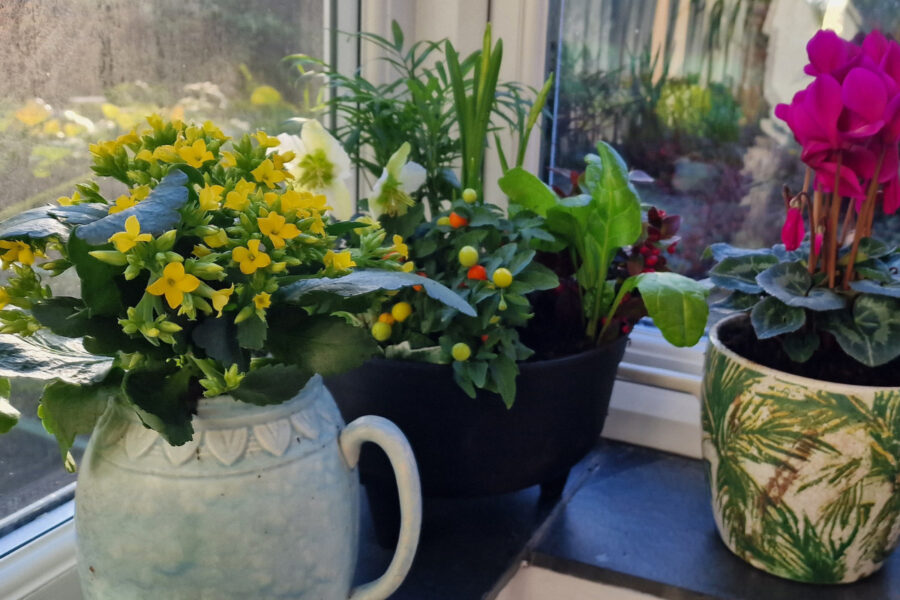
See what cuttings you can take from friends and family
This can be done throughout the year, but February is a good time for hardwood cuttings which can include any of the currants, as well as roses, cornus and other delights.
Check out local seed swapping events
This is a lovely way to meet other gardeners in your area over excited green-fingered chatter. It’s also a good way to source locally-resilient seed for your growing space.
Grow perennial crops
I wrote about this in the last issue and there are many exciting varieties of perennial edible now available to buy for longer lasting year-on-year returns.
Get some pallets
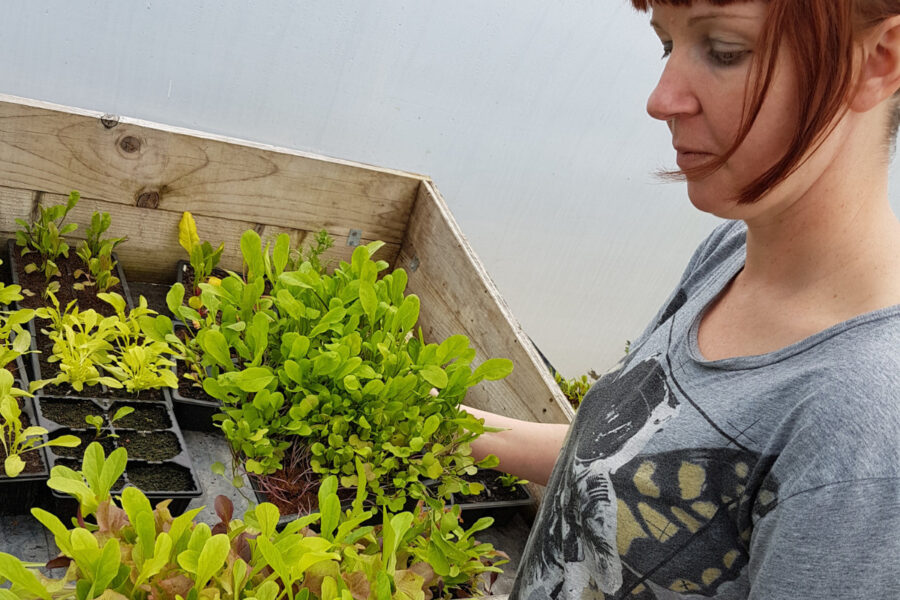
These are generally free (or cheap) to source from local garden centres, builders’ merchants and the like and they can be used in a number of exciting ways. From a home-made compost bin to a potting bench, wall planters and even furniture or a wood store.
Divide perennials
This can sometimes be done when buying in plants so you obtain two for the price of one. Also, some perennials in your garden (such as rhubarb) need root division after a few years to keep them productive, which means more plants to go around for you and also for use in swapsies with gardening chums.
Source some manure and mulch materials in your area
From obtaining wood chip from your local tree surgeon to making leaf mould in your garden from autumn’s fallen leaves, the opportunities for free-to-source soil improvers are ripe for the taking. Andrew Oldham talks about the different types of soil-improving manure on P40.
Reuse old compost from planters and pots as a mulch
Speaking of mulches, there’s still life in spent compost. Just use it added to borders and beds and it will help improve soil structure and the ground’s ability to stand firm through the tail end of winter.
Make use of waste items
From cardboard (compost ingredient and weed suppressor as Ruth Hayes shows on P9) to plastic bottles (impromptu cloche or seedling planters) try and think if you can find a use for items that pass through your home. It’s incredibly rewarding to make even a little space to do so.
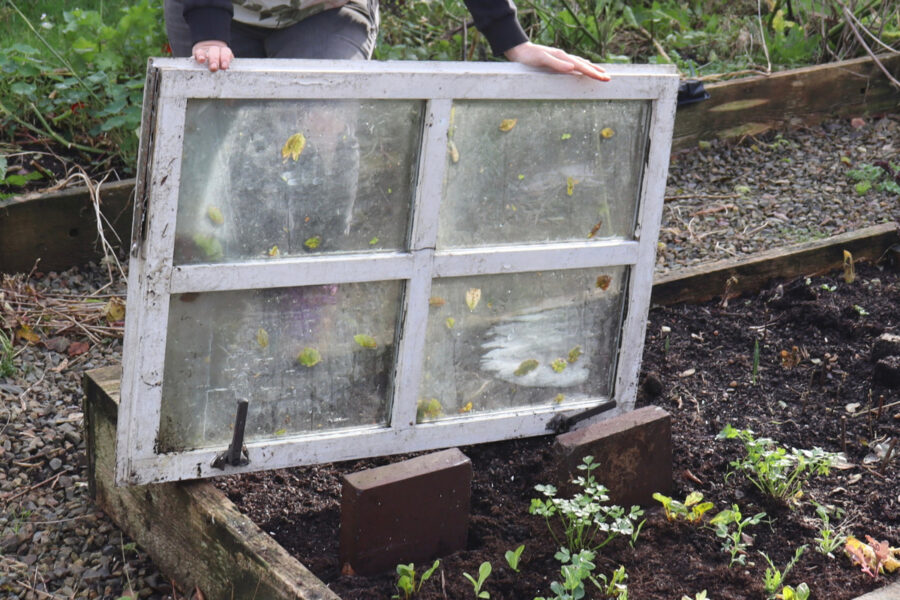
Grow on kitchen leftovers
There are many materials that can be worked with and it is great fun to experiment. From home-grown ginger and turmeric plants, to avocado houseplants, micro greens and plants from spice seed, see what you can nurture to prosper and grow.
Reuse old plastic plant pots
Turn the idea of single use on its unsustainable head by making use of plastic pots already in circulation and save money in the process.
Check out the reduced plant section at your local garden centre
The unloved and a little weedy can often (with a little TLC) become the productive and wondrous. Just look for plants that need repotting, watering, and which appear fundamentally healthy, and grab yourself a bargain – or several.
Check old seed – it may still be useable
With the exception of parsnip, many varieties of seed (including edible) can still be grown past the recommended use by date. Place a few seeds on moist tissue for a few days in a sunny, warm spot to see if they start to sprout.
Harvest water as much as you can
Water butts are readily available to buy and source in all different shapes and sizes, and even a makeshift bin can be used to collect readily available supplies for use (and money saving) during the dryer months of the year in your garden.
Reuse plant labels and make your own
This is easy to do by just cleaning old labels with vinegar and making your own with any available plastic, such as plastic milk cartons.
Make your own plant supports
From hazel and dogwood to willow, there are many ways locally-available wood can be used to create bean supports, hoops and other supportive garden structures. Why not get creative with what you can find in your garden?
Make your soil life the best it can be
Employing techniques such as no-dig and mulching will help encourage beneficial soil life, the microbes, fungi and minibeasts, which will improve your soil and the plants growing within it and reduce costs longer term.
Grow from seed
Nurturing plants into life from seed is incredibly enjoyable, and bought-in blooms and plants can all add up, so do what you can with the space you have to hand. Just pay heed to Bob Flowerdew’s advice on P66 and invest in the best quality peat-free seed compost you can as it will save money and boost results over the months ahead.
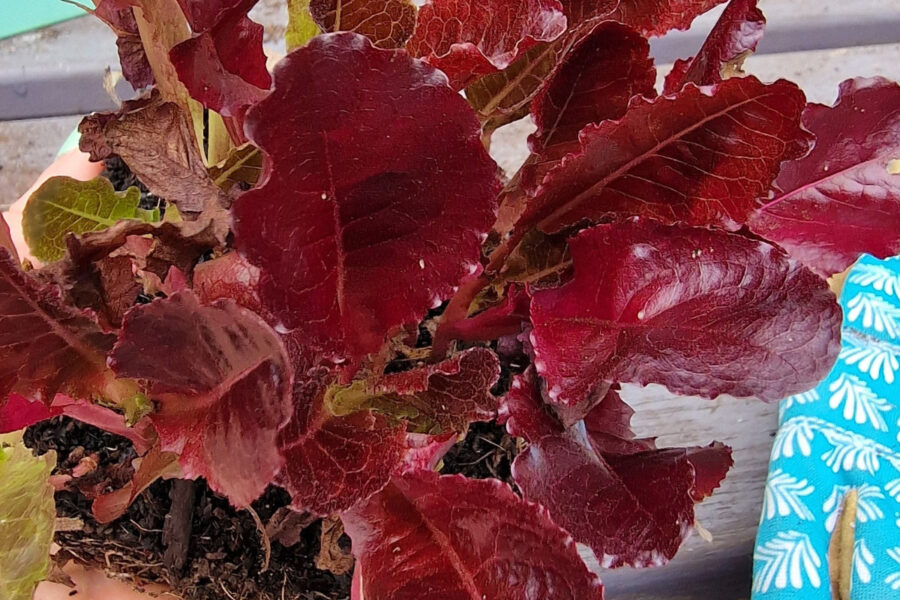
Mix plants to help with natural pest control efforts
It makes it much harder for pets to nibble what they are looking for when the same varieties aren’t block planted together and so readily available.
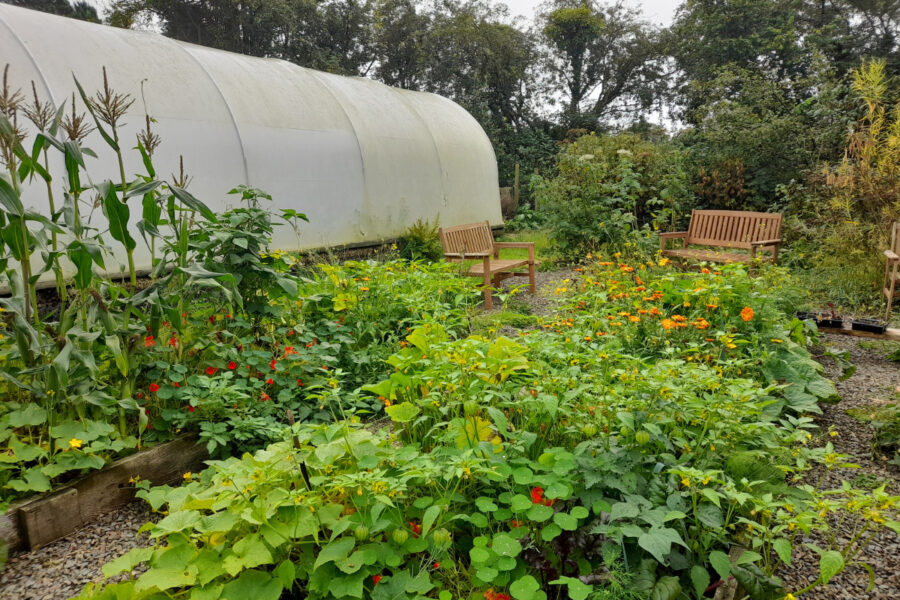
Give your tools a maintaining once-over
A quick oil and sharpen and your tools will look and work as good as new for the year ahead.
Seed save where you can
It’s such an enjoyable thing to do, saving money, creating more locally adapted seed and it’s great for wildlife to boot. Toby Buckland talks about seed sovereignty and seed saving on P62 and also explains ‘landrace’ seeds that thrive in our own individual plots
Make your own compost
Last, but certainly not least, because compost making is one of the best money-saving, garden improving activities going. Turning household and garden waste in the most lovely crumbly soil improver to boost the garden is priceless in the best possible sense.
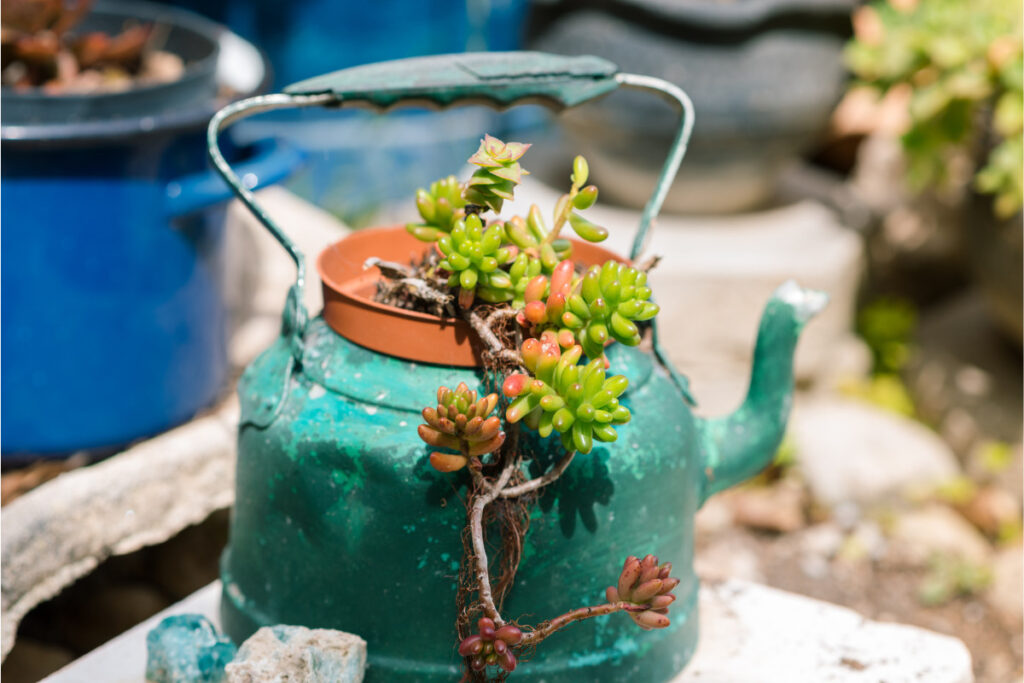
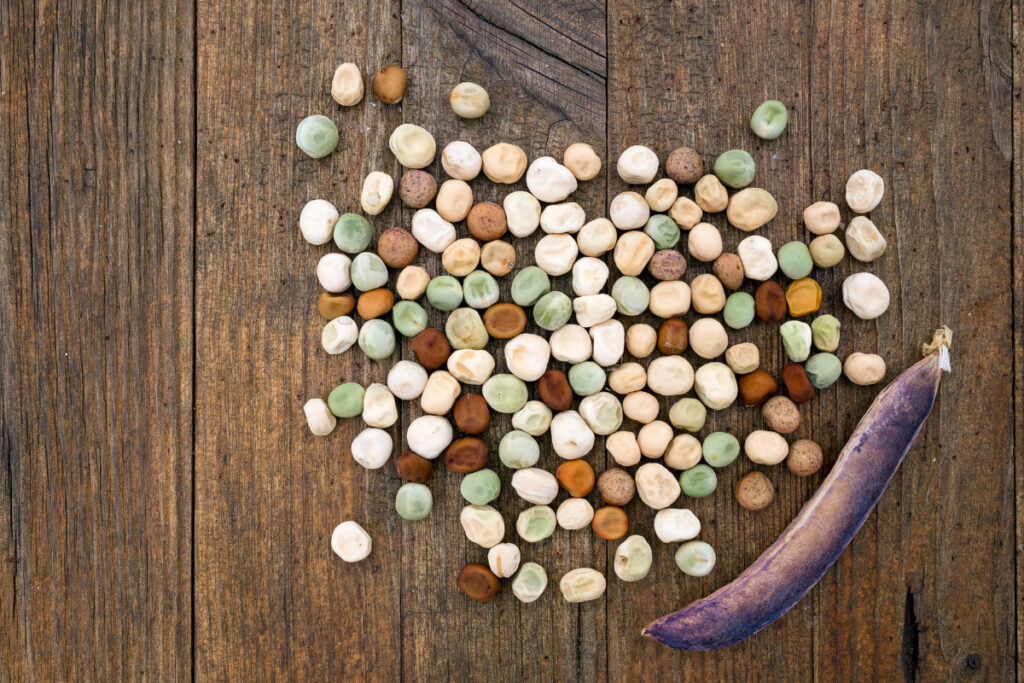
Find more tips, advice and articles like this at the Amateur Gardening website. Subscribe to Amateur Gardening magazine now

